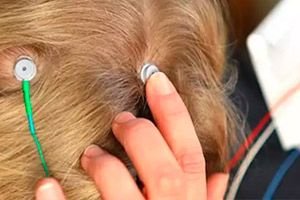
All iLive content is medically reviewed or fact checked to ensure as much factual accuracy as possible.
We have strict sourcing guidelines and only link to reputable media sites, academic research institutions and, whenever possible, medically peer reviewed studies. Note that the numbers in parentheses ([1], [2], etc.) are clickable links to these studies.
If you feel that any of our content is inaccurate, out-of-date, or otherwise questionable, please select it and press Ctrl + Enter.
Application of transcranial micropolarization method in patients with multiple sclerosis
Medical expert of the article
Last reviewed: 02.07.2025
 ">
">Multiple sclerosis is a complex disease that often leads to disability. It is believed that this pathology is impossible to overcome. However, scientists continue to search for effective methods to alleviate painful symptoms. Thus, they recently presented a new method: transcranial cerebral micropolarization (TDCS).
Since multiple sclerosis is a very, very common disease, it seems somewhat strange that with today's medical capabilities there are no effective methods for treating this pathology. According to statistics, only in American medical centers, such a diagnosis is established on average in 200 new patients every week.
The disease is characterized by an inevitable increase in symptoms: the patient gradually loses control over his own body. Among all patients with multiple sclerosis, only 20% have a benign course of the disease: that is, with relative preservation of working capacity and a sluggish course.
A new method of transcranial micropolarization is designed to help improve the functions of different parts of the brain. It uses a weak direct current.
Scientists led by Professor Marom Bickson, representing the City School of New York, have created a PC device that should alleviate the symptoms of multiple sclerosis. Clinical experiments were conducted in collaboration with the Comprehensive Center for the Study of Multiple Sclerosis (Langone Medical Center). More information about the experiment can be found in the periodical Neuromodulation. Dr. Lee Charvet acted as the head of the study.
During the experiment, scientists exposed the brain structures of patients to the influence of low-amplitude direct current, using a number of electrodes localized in the necessary areas of the scalp. The current activated areas of the cortex, improving the conduction of impulses between nerve cells, which allowed stimulating the processes of higher nervous activity. As a result, specialists managed to partially restore individual mechanisms that are most often affected by multiple sclerosis - learning and memory.
The procedures were performed on an outpatient basis, and all processes were monitored by specialists online. Each patient underwent 10 sessions of 20 minutes each, after which their nervous activity was assessed. The experiment showed that most patients had significantly improved memory, increased concentration, and increased ability to adequately respond and socially communicate. The best results were found during testing of patients for reaction quality and ability to concentrate.
"The experiment has proven that remote transcranial micropolarization procedures under the control of a medical specialist can be effectively used in the treatment of multiple sclerosis. These are genuine and safe sessions, which, however, significantly increase the vital activity of patients," says Dr. Lee Charvet.


 [
[